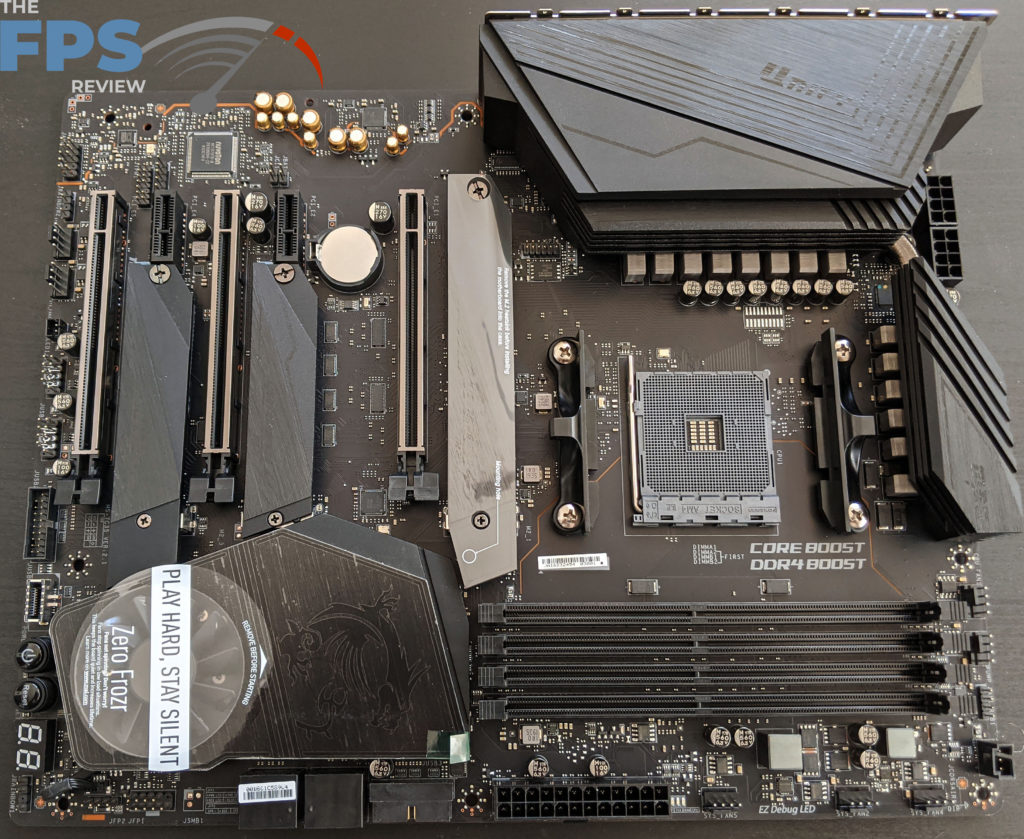Motherboard Layout & PCB Features
The motherboard layout is very good. There are no major issues or things that stand out as particularly inconvenient or hard to work with. There is the usual placement of the CMOS battery which I don’t care for as the graphics card has to be removed to change it, but this is a minor problem. One that most people will never experience as the life cycle a CR2032 battery tends to be longer than the service life of one of these motherboards. Even if it wasn’t, you might have to change this once in 7 or 8 years. It’s not really a big deal, but I have to point it out at least.

Motherboard manufacturers used to put fan headers all over the PCB so that you would have a shorter run to each of the fan positions in a typical ATX case. However, that doesn’t work as well as you might think and it can make for a messy wiring job. This is especially true of some locations where wires may have to be laid out over the PCB or stretched across some part of it. These days, motherboard manufacturers tend to cluster most of the fan headers in one or two locations to make your build look less cluttered. That’s precisely what MSI has done here with five, four-pin fan headers. Two more are at the bottom of the motherboard where they make for a short run to fans lower in the chassis.
As usual, you have your dedicated CPU fan and water pump fan headers. The rest are labeled as system fans and are general use. All of these offer DC and PWM controls. Despite the motherboard’s complete lack of onboard RGB LED’s, there are plenty of optional headers for RGB LED lighting. There are four RGB headers including the Corsair proprietary one, a single four-pin header, and two addressable RGB headers.
The MSI MEG X570 Unify also features 4 EZ Debug LED’s which are really close to the 24 pin ATX power plug. These are virtually useless. They are all the same color and are tucked out of the way where they really would be hard to see in most system chassis. However, there is a traditional LED POST code display, so this is a non-issue. It was just something I had noticed. You also get power and reset buttons on the PCB. I always appreciate this, although it is not generally necessary.
The motherboard also has an active chipset cooler, which is extremely loud on startup. However, it quiets down quickly and during normal operation, and thus never heard it operate after initial power on. It’s always a concern when you see active chipset cooling. I think motherboard manufacturers largely put it there as a “just in case” measure as the chipsets do pull quite a bit of power. However, the conditions where active cooling would be required seem to be few and far between.
